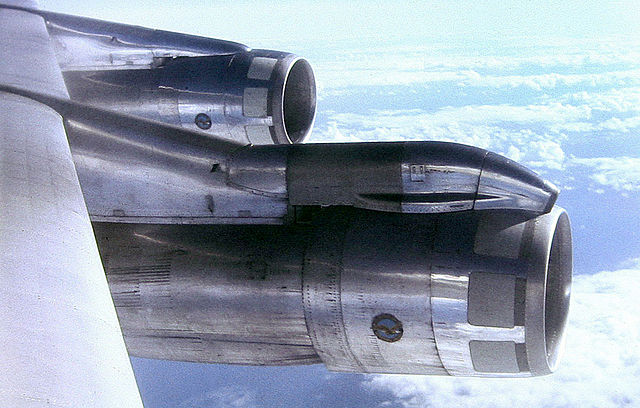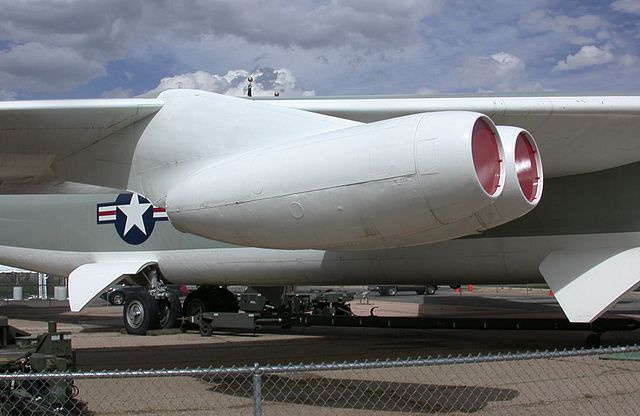A nacelle is a streamlined container for aircraft parts such as engines, fuel or equipment. When attached entirely outside the airframe, it is sometimes called a pod, in which case it is attached with a pylon or strut and the engine is known as a podded engine. In some cases—for instance in the typical "Farman" type "pusher" aircraft, or the World War II-era P-38 Lightning—an aircraft cockpit may also be housed in a nacelle, rather than in a conventional fuselage.
Engines in nacelles on a Boeing 707
Twin-engine nacelle on a B-52 Stratofortress
The Boeing E-3 Sentry uses a nacelle to house its large radar.
A podded engine is a jet engine that has been built up and integrated in its nacelle. This may be done in a podding facility as part of an aircraft assembly process. The nacelle contains the engine, engine mounts and parts which are required to run the engine in the aircraft, known as the EBU. The nacelle consists of an inlet, an exhaust nozzle and a cowling which opens for access to the engine accessories and external tubing. The exhaust nozzle may include a thrust reverser. The podded engine is a complete powerplant, or propulsion system, and is usually attached below the wing on large aircraft like commercial airliners or to the rear fuselage on smaller aircraft such as business jets.
Podded engines on a Boeing 707.
Junkers Ju287 showing front fuselage-mounted pod and underwing pod
The 1955 SE 210 Caravelle pioneered aft engine mounting
The VFW-Fokker 614's overwing podded Rolls-Royce/SNECMA M45H






